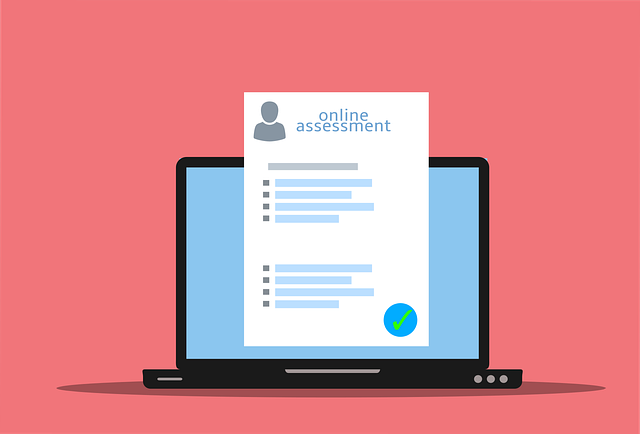Visual Composer vs. WPBakery WordPress Page Builder – Which is the Best?
Visual Composer vs. WPBakery is the great debate going on in WordPress DIY design. At first glance, it's easy to see why both plugins are highly recommended to improve a website's look and make it look more professional.
However, there are both subtle and significant differences between the two programs, and depending on your goals, you may find one more advantageous than the other.
You may also have budgetary issues to consider, such as whether you can afford the most advanced package, or if you can live without the convenient features that the free and low-cost plans do not include.
In this guide, we will discuss the pros and cons and then share our final thoughts on making your choice.
Are Visual Composer and WPBakery the Same Thing?
We might say that’s a fair question, considering the similarities in the product and the fact the two programs are seemingly related in history. While they both share a history, these two products are not the same, and they perform different functions.
If you look up comments on this great WordPress debate online. You might find a number of people claiming that both programs are the same, or are only slightly different, or are a deception by the company as if they are relaunching the same program by a different name. However, all this confusion stems from a simple name change and company evolution.
The WPBakery plugin debuted first and became one of the most popular page builders for WordPress, particularly at the time when the competition was minimal. It was also called Visual Composer, back in the day, and was one of the first successful page builders.
The creators originally sold the first Visual Composer and called it a Page Builder. When the company decided to sell the Visual Composer Website Builder, an altogether different plugin, they had many different marketing issues to contend with, including name confusion.
The situation started when the creators of the original WPBakery (then called Visual Composer Page Builder, which was a plugin everyone liked) wanted to change the name to the Visual Composer Website Builder, the newer product.
The creators also wanted to address two different markets: the lifetime license and the yearly license model, including more frequent updates and cutting-edge features.
However, things got complicated since they had a lifetime license deal with the company Envato for releasing products. Adding powerful new features would also require higher production costs, sustainable with a yearly license model, but not a one-time for-life purchase.
The creators could not sell another “Visual Composer” program outside the existing agreement. They saw no other choice but to create a new product entirely, while still honoring the original contract. Everyone agreed that a name change was required, so the Visual Composer Page Builder became the Visual Composer Website Builder.
Here's a video on YouTube explaining the complex WPBakery situation.
Who Created Both Plugins?
Some say the company was called CodeCanyon, although the official company name is still Visual Composer, according to the official website. The founder and programmer of the group, Michael Makijenko, recently visited Reddit to help make the situation clear to users and clarify some points.
He also expressed an interest in moving away from the established marketplace to break new ground with a reimagining of Visual Computer, while also moving closer to the open-source community and the GPL license.
Overview of WPBakery
Now at first glance, it seems like the newer product is, the better one. But many users still like WPBakery, and not just because of its price. Let's discuss the differences between each plugin.
WPBakery is the original launch of Visual Composer Page Builder and is designed to fit with any WordPress theme. You can work with almost any WP theme and improve the page's elements by simply installing the WPBakery plugin. Buying the plugin gives you access to layout templates, add-ons, unique pages, and over 50 content elements to use.
The plugin is a drag-or-drop style, meaning you don't have to learn complicated coding. A Skin-Builder lets you customize the colors of your website and other design or elements styling.
The Template Library offers premium-quality templates and can improve the overall look of your website. Even though WPBakery is considered the older plugin, it is still updated for technical issues and even new templates.
The Extendable API allows developers to work with the content elements smoothly. Even better, the plugin still had a dedicated support team to offer technical support. The Advanced Grid Builder lets you work with more complex grids on the page, such as portfolio display options or individual posts. Choose from over 40 styles with additional custom options.
Layouts are mobile-ready and also display accurately on practically every modern device. The plugin is also compatible with multilingual translation, Yoast SEO, parallax effects, and works with image filters.
WPBakery is by no means a turnkey solution. After all, add-ons for the plugin are everywhere, and you may need to buy your favorite add-on feature from a third party. The additional cost could be another $50 or less.
Lastly, you can specify whether you want certain users (or groups) to have access to WPBakery or if you want to restrict privileges.
Pros
- Fairly easy to use, with a point and click system that does not require coding knowledge
- Easy to learn, within hours for simple operations
- Compatible with multiple themes and WordPress versions
- You can disable Guttenberg for a less confusing operation
- New templates added every month
Cons
- There is no real free version since it's a sandbox demo only
- If you uninstall WPBakery, it leaves extra code behind, which could affect performance
Overview of Visual Composer
Visual Composer Website Builder is not just an updated version of WPBakery (or the old Visual Composer Page Builder), but a complete revamping of the program. Visual Composer is a drag-and-drop website builder with a fast and easy-to-use drag and drop builder.
In addition to a drag and drop design, you also get high-quality templates, extensions, and elements, as well as WP “blocks” (the new standard in publishing content).
The reboot of Visual Composer is designed for beginners and simplifies much of the WordPress process. You can start from a template or customize your look. The most important factor is that Visual Composer changes the entire way you work with WordPress. The interface is easier to use, less WordPress-centric, and more its entity.
With a new interface, you can design pages faster and customize content elements that will display on all mobile devices and tablets, and desktops. You can also use WooCommerce blocks and download new elements to create rich content or make the plugin compatible with many other WordPress products.
The company markets Visual Composer as a plugin “will work with any WordPress theme,” just as WPBakery suggested. However, in addition to making the process faster, Visual Composer also lets you view changes instantly with a Tree view and a “live” Frontend and Inline editor. You don't have to “preview” to see a change, with a live viewer.
The ability to customize elements of the page and spaces, backgrounds, borders, and other special effects, is what gives Visual Composer Website Builder (as opposed to just a page builder) its edge.
Other helpful features include integration with Unsplash stock photo images, pop up builders that suggest high-conversion tools, and smart Analytics with insights into your traffic and audience.
Visual Composer also integrates with third-party add-ons, and they may come at an extra cost.
Pros
- A more modern look that transcends the typical WordPress interface
- Cleaner code and, therefore, some say better performance
- Over 200 templates to choose from
- Save rows, elements, or sections
- Ability to change global or page headers, footers, and sidebars with a drag and drop solution
Cons
- Requires more time to learn than WPBakery
- More expensive, not only because of yearly fees but also for multiple sites
- Some claim although the site is friendlier for newcomers, it offers less customization overall
Comparisons Between Visual Composer and WPBakery
There are both primary and minor differences between these two programs. Still, the most important difference is that WPBakery is shortcode based, meaning every feature happens due to WordPress shortcodes. Users can execute these short single-line commands with just a point and click operation.
However, Visual Composer works with different technology. The program generates static HTML to create content, not shortcodes. Designers believe this ensures cleaner code overall and better performance.
One problem with WordPress builders is that if you delete the builder plugin, later on, you will still leave bits of shortcodes behind on the code, which could compromise performance. Visual Composer Website Builder doesn't use shortcodes and so will never leave these trace pieces of code. You can even use the Tree view to see the page in layers to make sure it's clean.
It's not merely that Visual Composer is faster — more like it's more enjoyable and fun to use for people who are not entirely comfortable with WordPress and its shortcodes. But even if it does have a smoother interface, it still requires some getting used and some extra time for learning the changes.
In short, imagine switching to a different design than WordPress without actually leaving the WordPress CMS coding behind. Then again, if you are comfortable working with shortcodes, you can add shortcodes into your content using Visual Composer's interface.
The website builder also has over 100 features and templates to choose from and is compatible with most other WordPress plugins, such as Gutenberg, WooCommerce, Yoast, and Gravity Forms. The Visual Composer Website Builder lets you create professional headers and footers and layouts that would be more difficult to achieve with WPBakery (although not impossible).
Another advantage to Visual Composer is that its yearly subscription covers your cloud-based hub, which allows you to download all the elements as you need them. No need, then, to flood your website with preset elements.
At the same time, good reviews of Visual Composer do not imply that WPBakery has outlived its usefulness. WP Bakery continues to be updated and improved, as the creators honor the original contract and one-time payment model. Visual Composer adds more features for a yearly membership fee.
The best way to remember it is that WPBakery is ideal for creating multiple variations in your content. However, if you want to design a truly eye-catching website, and more importantly, make the process easier for you, then the new Visual Composer would work better.
Payment Options
Both plugins do require an initial investment, with WPBakery being the far more affordable option. There are two licensing packages:
- $45 one-time or lifetime membership fee, but only for a single site license
- $245 extended license for “Software as a service” or subscription-based software development
WPBakery comes in version 6.4 and does not have a free version. However, you can try the demo version by registering a name and email address to receive a newsletter. The demo version lets you try a sandbox version of the site, meaning you can preview how it would look, but you cannot publish it.
The $45 package provides complete access to WP Bakery's tools and free updates, premium level customer support, and access to a template library.
Visual Composer Website Builder has four licensing selections:
- Free
- $59 for a premium license and unlimited access
- $149 for three websites
- $349 for a developer's unlimited license
Visual Composer's premium license for one site offers unlimited access as well as customer support. The price includes one year of updates and tech support and total access to the “hub,” which simplifies most of the website builder.
Unlimited access also includes premium page templates, global templates, the ability to import or export templates, elements and compatibility customization, Woocommerce support for e-stores, and header/footer editing.
The three websites package includes the same features, but for three different websites.
The higher-end package covers everything else, from license and developer's management, or for agencies who want to use the system for multiple websites.
Free Options
WPBakery Page Builder does let you take a test drive with their “dedicated demo server.” You have your copy of WordPress to experiment with, as well as shortcodes and content preloaded for you to use. Play with layouts or start with a completely blank page with no wait time.
Visual Composer Website Builder has a lifetime free option with regular updates. While the best features are on the premium plan, the free plan does allow you to get started and build according to your need.
With a free plan, you get an unlimited publishing platform for one website, a limit of 30 elements, and a limit of 10 templates. You even get API options and insights analytics for your site.
However, before you conclude free is all you need, remember that the basic free site for publishing does not include the more complex theme builder, Woocommerce features, or the header/footer/sidebar editor that makes things so easy. You can publish a site, but it won't be the best it can be under the free plan.
WPBakery
- Free demo only to see how your site would look, no publishing
Visual Composer Website Builder
- Free plan for one site but not all features are enabled
- No customer service
Upgrading from WPBakery to Visual Composer Website Builder
Unfortunately, the process is more complicated than a simple upgrade.
Let's say you want to update Visual Composer. In that case, you log in to the account and then click the license section and “upgrade license.” You make a payment and then wait for the upgraded license to go through.
However, because Visual Composer and WPBakery are two completely different programs, using different technologies, there is no way to import data between the two plugins, at least not as of 2023.
Creating Forms
Some of the most important parts of a website are the interactive forms that visitors fill out. These forms can create leads for future sales. While both our reviewed programs have add-ons for building custom forms, these are third-party developers.
However, adding the forms is easy. After installation, all you have to do is enter a shortcode anywhere on your site. You can use the Visual Composer Interface to create an element or the WPBakery for automatic plugin coding.
Whether you want to add a contact form, login or register button, or a complex booking form, all you have to do is drag and drop. Forms that integrate with site-building plugins will work on any modern tablet or mobile device.
Even if you don't want to use shortcode placements, compatibility elements can be added directly, as with the popular “Gravity Forms” or WP Forms.
Using WooCommerce
WooCommerce is an open-source plugin designed for WordPress and known for its simplicity in installing and integrating with other plugins. While it is a separate entity from the two web builders, WooCommerce is a free plugin and compatible with both.
Visual Composer lets you add WooCommerce content as an element, such as a price and “add to cart” feature, or even a column or gallery. You can also activate a feature product list, bestsellers list, or order tracking status.
For WPBakery, WooCommerce offers 16 layouts and four styles to choose from, as well as pluses like an Action Tooltip for hovering and a Disable Action Button for customizing. You can also count on unlimited colors, filtering products, and other nic effects like infinite scroll, pagination, and AJAX loading.
Frequently Asked Questions
I've heard WPBakery can crash and send an error message. Why does it happen, and how can I fix it?
WPBakery usually experiences problems because of coding errors, since its main operation is automatically creating bits of code. However, errors can occur if those codes are corrupted. What the WPBakery staff suggests upon receiving an error message is that you:
- Resave the page by clicking “update” (this can refresh and get rid of some minor issues)
- Update your plugin and or theme, just in case there is a compatibility issue
- Disable any extra plugins by third-party developers that may be conflicting with WPBakery
- Check for any conflict between your site name and the site URL
When working with the newer program, you might notice a 500 error, which could include several messages, as the Visual Composer website indicates. Similarly to the other program, refreshing the page or disabling conflicting plugins could resolve the issue.
If there is a PHP or .htaccess issue, you may need to contact customer support or your web hosting provider.
What is the difference between elements, widgets, and blocks?
In many cases, it's a play on words. Sometimes they are called widgets or modules, while WPBakery refers to them as content “elements.” The point is, they are “drag and drop” features and so are deposited onto a page if you're using either of the two webpage building programs of our discussion.
If a plugin has different “elements” offered, then these would probably include popular modules like text blocks (for paragraphs), video players, social media links, image carousels, and grids for less “centered” and more stylishly placed features on the page.
You can also manually enable or disable post types, meaning you can decide if you want to change just posts or separate rules for pages or active posts. When you load a template, you automatically load a layout with preset blocks or elements and add it to an existing page.
You can then replace the default text with your text and images, keeping the template format. Depending on your chosen plan, you could also adjust more advanced content elements, like a button's size.
Should I use a template or design my site starting from a blank page?
While it's tempting to want to start your new page and customize the look for originality, the results are often not what you saw in your head. Visualizing how a website should like and then trying to recreate that with an abstract approach can be very difficult for first-timers.
Many new users prefer activating templates with preset layouts, available with both WPBakery and Visual Composer Website Builder.
There are two distinct advantages: one, that the site looks more professional than a site that has no sense of balance or structure, and two, that the website owner can focus more effort on developing high-quality photos, videos, writing, and graphics.
It's also important to remember that search engines like Google and Bing are counting on websites to look “standardized,” clean and professional, and to display properly on multiple devices. If poor web design compromises the site, there may be search engine penalties.
What are the most common errors website owners make?
One common thought is that it's better to be original than overly standardized, and generic websites are indeed a turn-off. It's also true that some web design ideas are trendy and may eventually go out of style.
However, practically every involved in web design agrees that using templates and professional layouts will prevent you from making common mistakes that may come with a “blank page” approach.
- A webpage that's too busy with crammed text and or graphics
- A webpage that's too minimalist and doesn't get the point across
- No distinct brand image, leading to too many variations of graphics, fonts, text paragraphs, and images
- Poor call to action
- Poorly designed reading sections often called “white space”
- Nothing scannable, which loses the interest of readers
- Images that distract from the message
- Confusing navigation or pages that are never seen
- No target audience identified
- No contact information
- Haphazardly placed ads
While using a template will not automatically create a “brand look” for you, it will help tremendously. You can rest assured that working from a template and simply replacing images and text in the designated areas will ensure a clean and attractive look.
Besides, successful templates come with a proven track record of marketability. In most cases, unless you've hired a web designer that studies new trends, it's always better to go with a template design versus the unknown.
Remember, you can always add on additional pages when the time is right, particularly landing pages with a call-to-action, rather than risking overloading the homepage.
Conclusion
When it comes to reputation, both WPBakery Visual Composer and Visual Composer Website Builder have a strong online presence and a devoted following. Website builders who enjoy working with the freedom of a WordPress interface and bits of auto-generated code will have no problem integrating WPBakery.
Visual Composer Website Builder will aim to please those who want a new look and interface with static HTML instead of the usual shortcode. Many prefer the latter because of the lesser chance of bad coding. Critics of Composer may well focus on the idea that VCWB is essentially just an upgrade of WPBakery, not without its critics.
While reading reviews is helpful, don't forget to try each program yourself to get the full experience. Why not try a free demo of the original program or a free (and upgradeable) plan for its more comprehensive successor to see which you prefer?













